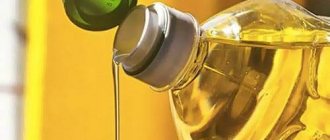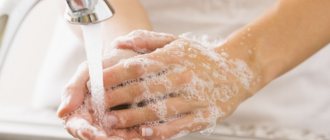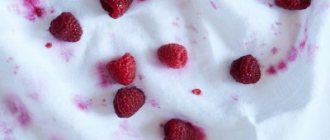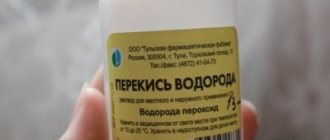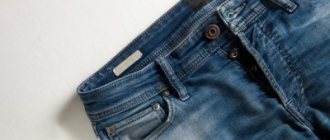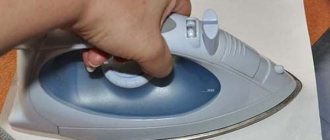How to properly wash sunflower oil from clothes at home. Mothers and grandmothers considered such spots practically invincible. Fortunately, over time, housewives learned to deal with them. Today there are many simple methods using available tools.
The difficulty in removing stains from vegetable oils is that they do not dissolve in water. Such contaminants can be effectively combated only at high temperatures or by pre-treatment with a substance that dissolves fat molecules. It is important to consider the type of fabric and the durability of the mark itself.
- How to remove traces of vegetable oil
- Proven means
- Subtleties when working with different materials
- Removing old stains
- Removing butter
- Expert advice
How to remove traces of vegetable oil
Vegetable oil stains, like any other stains, are easier to remove while they are fresh, so you need to act immediately. Timely measures taken are the key to success. What to do:
- Wetting its outer edges with cool water will help prevent contamination from spreading.
- The newly created stain should be blotted with a paper napkin without rubbing it. This will prevent oil from penetrating deep into the fibers of the fabric.
- The remaining mark must be treated with dishwashing detergent, applying it with patting movements, rubbing in, but not smearing. This should be done with your fingertips from the edges to the center.
Expert opinion
Irina. Housewife.
Ask a Question
Important! Timely measures will help remove the oil stain quickly, without damaging the fabric.
Proven means
Salt
Kitchen salt has the ability to absorb liquid. Sprinkle it generously on the stain, and after 15-20 minutes shake it off and replace it with a new one. Then the item is washed in the usual way.
Important! This approach is suitable for any type of fabric, including delicate ones.
Dishwashing liquid
Dishwashing detergents, such as “Fairy”, “Gala Cold Power” and others with grease-dissolving components, successfully cope with any oil stains on all types of fabrics.
In their pure form, they are generously applied to the dirt and left for 30-60 minutes. After which the item must be washed in the usual way. This method is suitable for all types of fabrics and clothing, including carpets and upholstery.
Important! If there is a large area of dirt, the entire item must be soaked in a solution of dishwashing detergent and water.
Mustard powder
Dark things can be saved with mustard powder.
It is diluted until a homogeneous and thick mass is obtained. The composition is applied to the contaminated area for 40-60 minutes until completely dry. Then you need to shake it off and wash the product in the washing machine.
Important! This method is only suitable for dark things, since mustard tends to stain fabrics.
Soda
It is successfully used to clean grease and other contaminants from surfaces.
There are no contraindications to using soda for different types of fabrics. It should be sprinkled generously on the stain and left to act for 1-1.5 hours. Then you need to shake it off and evaluate the result. If necessary, repeat the procedure.
Gasoline and other solvents
A method known to everyone for many years and successfully used for removing oil stains is the use of purified gasoline.
The liquid is applied to the contaminated area with a cotton pad or sponge using blotting movements. After weathering and drying, the item should be washed as usual.
Stain remover
Preference should be given to special stain removers that are effective in combating greasy stains. They are used strictly according to the instructions.
Washing powder or soap
In most cases, neither soap nor laundry detergents can remove oil stains. Because they do not contain components that effectively dissolve fat molecules. They are used at the final stage, when the oil stain has already been removed.
Using starch
For delicate fabrics, use corn or potato starch.
You will need 2 more white napkins or kitchen towels and a hot iron heated to the temperature that is acceptable for this type of material. The product at the site of contamination must be moistened. The item is placed on the wrong side, previously sprinkled with starch. On the other hand, you need to do a similar action. Then the “structure” is ironed several times.
After this, you need to remove the napkins, shake off the starch and evaluate the result. Repeat if necessary. Wash the item as usual.
Plumbing cleaning products
Any kitchen surface cleaner will do.
It must be diluted with lukewarm water in equal proportions. Then the solution is applied to the stain and left for 20-30 minutes. After achieving the desired result, the item must be rinsed thoroughly.
Expert opinion
Irina. Housewife.
Ask a Question
Important! Use this method exclusively for resistant fabrics. It is contraindicated for delicate products. Before you start using the product, you need to test its effect on an inconspicuous area of the item.
Ammonia and turpentine
Turpentine and ammonia are combined in equal proportions, after which they must be diluted 1:1 with warm water. The mixture is applied to the oil trail with a sponge. Then, you need to wait about 20 minutes. Then the item should be washed.
Glycerol
It can be purchased at your nearest pharmacy.
A bottle of glycerin is immersed in warm (50-60 degrees) water for 20 minutes. Then the area of fabric stained with oil is soaked in the product and left to act for about an hour. After that, the area should be blotted with a napkin and the item should be washed.
Dentifrice
A practical housewife should always have it at hand.
Despite the fact that it has long been replaced by toothpaste, which is less abrasive, many household problems are solved with the help of tooth powder. It is diluted with warm water to a paste-like state and the solution is treated with a rubbing motion. After waiting 10-15 minutes, the paste should be washed off and the effect assessed. Repeat if necessary.
Important! This method will not damage delicate tissues.
Chalk
It has good absorbent properties.
Chalk effectively absorbs oil components. In addition, it is not capable of damaging delicate and delicate tissues. To remove a greasy stain with chalk, grind it to a powder and apply for 1.5-2 hours. As an alternative, it is permissible to use the method with an iron and napkins.
Important! You can replace chalk with Calcium gluconate tablets.
Shaving foam
It is successfully used for various types of fabrics as a vegetable oil stain remover.
It contains components that effectively dissolve fats. Expert opinion
Irina. Housewife.
Ask a Question
Important! Use foam. The gel has other components.
The bottle must be shaken before use and foam should be applied liberally to the stain and left for 20-30 minutes. Then blot with a clean and dry cloth, and then rinse with water. This procedure can be carried out several times without fear of damaging the product.
Important! This method is ideal for carpets and furniture upholstery.
White clay with vinegar
A mixture of vinegar and cosmetic white clay can successfully remove fresh and old greasy stains.
Clay can be purchased at cosmetics and household chemical stores. It is diluted with table vinegar to a thick paste. Then the mixture is applied to the contaminated area.
It should be left until completely dry. Residues should be shaken off or cleaned depending on the type of fabric.
Removing unpleasant odor from a bottle
Even a clean bottle may smell damp and musty if, for example, it was left wet with the cap closed. This smell can be removed in several ways:
- With the help of coffee. An excellent absorber absorbs even strong odors instantly; after just a couple of minutes the container will smell pleasant. Add 2 tbsp. freshly ground coffee powder into the neck, close the lid and leave for 2 days. Then, after the time has passed, the coffee is poured out, and the bottle is rinsed and dried with the lid open.
- Lemon juice. Dilute the juice of one lemon in a glass of water and pour the resulting liquid into a container. Shake well with the lid closed and then leave for the whole day so that the lemon juice absorbs the unpleasant odor. Then drain the liquid and allow the bottle to dry thoroughly.
- Orange zest. Remove the zest from one orange and place it in a bottle for 2-3 hours. Then they remove it and add a new portion. After 2-3 such manipulations, nothing will remain of the unpleasant odor.
Cleaning a bottle of oil traces is as easy as shelling pears and does not take much effort and time. Do not delay cleaning, as fresh marks are removed much easier than old ones. With regular washing, your oil storage bottles will last a long time and look like new.
Subtleties when working with different materials
The cleaning method must be selected taking into account the type of product and material. Different substances behave differently on different types of tissue.
Jeans
Denim quickly absorbs vegetable oil. Contaminants instantly penetrate the fibers. Therefore, to remove oils from denim, soaking methods are suitable, the time of which should be increased. The advantage is that these products can be washed at high temperatures, which dissolve oils.
Raincoat
Jackets, bags and other items made from raincoat fabric are processed using any cold method. It is preferable to use dishwashing detergent. Initially, it is applied to the stain for a long-term effect of 1-2 hours. Then, the entire thing is soaked in it for 3-4 hours.
Knitwear
T-shirts most often suffer from vegetable oil getting on them.
Knitted items will not tolerate exposure to high temperatures and aggressive detergents. Preference should be given to gentle methods followed by soaking and washing. Do you wash by hand?
Oh yes! No
Carpets and upholstery
The difficulty in removing stains from these surfaces is that they cannot be washed or soaked. Therefore, it is preferable to use dry cleaning methods - soda, chalk, tooth powder or shaving foam (see above).
After the stain is removed, the remaining product is removed using a vacuum cleaner. The carpet or upholstery should then be cleaned completely with a damp brush and soap.
Expert opinion
Irina. Housewife.
Ask a Question
Important! It is easier to treat furniture upholstery or flooring if you have a steam cleaner. A washing vacuum cleaner also works great.
Trousers
An item of clothing on which traces of oils appear more often than on others and the reason for this is carelessness while eating. Problems with removal will not arise if fresh contamination is sprinkled with salt or soda, as in the above method.
Salt
Expert advice
To remove a greasy stain without damaging the product, you must adhere to the following recommendations:
- Any substance can only be used if it is safe for the fabric on which it will be used. Before proceeding to the treatment of the entire item, the product should be tested on an inconspicuous area of the product.
- There is no need to try to remove fat from the fabric by drying it, this will complicate the stain removal.
- The product must be processed by placing it on a washable surface, diaper or napkin. You should not do this on the sofa or carpet. There is a high probability that oil will stain the surface under the item.
- You should not increase the proportions of aggressive detergent components; it is better to repeat the procedure several times if necessary.
- Some items, such as suede and leather, are best taken to dry cleaning.
In fact, it is not difficult to wash sunflower or other vegetable oil from clothes. It will take a little time, effort and persistence.
Homemade stain remover
You can find ready-made stain removers on the market. True, this will require time and money. At home, it is not difficult to make a composition from improvised means that will clean sunflower oil well.
Tip: when buying a ready-made stain remover, pay attention to what fabrics and stains it is intended for.
To create a stain remover with your own hands you will need:
- ethyl alcohol (10 ml);
- ammonia (8 ml);
- gasoline (5 lm).
Pour the liquids into a small bottle and shake until well mixed. Apply the mixture to an inconspicuous area of the clothing and wait to ensure it is safe for the fabric. If the test went well, rub this stain remover onto the stain, and after 20 minutes, wash off the composition. On old stains, the mixture should be kept longer (maximum one hour).
Important! Flammable liquids should not be used near open flames or in unventilated areas.
Most often, sunflower oil ends up on kitchen towels or napkins. Putting them in order is much easier than clothes. High-quality towels are not afraid of laundry soap, strong washing powders, bleaches and high temperatures. And to return your favorite things to their former appearance, you will have to put in a little more effort. But with due care and perseverance, you can achieve your goal. And for extreme cases, there is dry cleaning.
